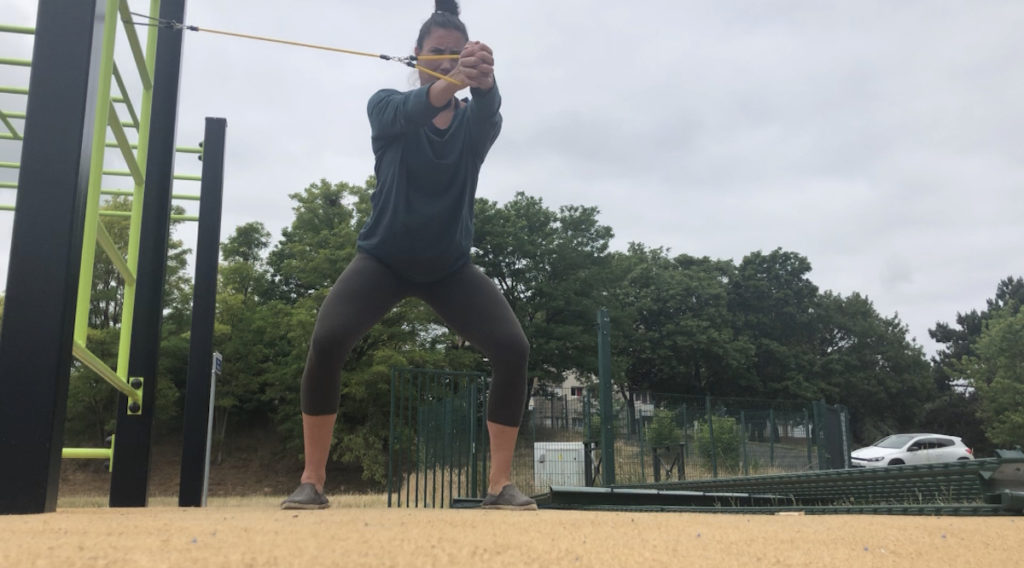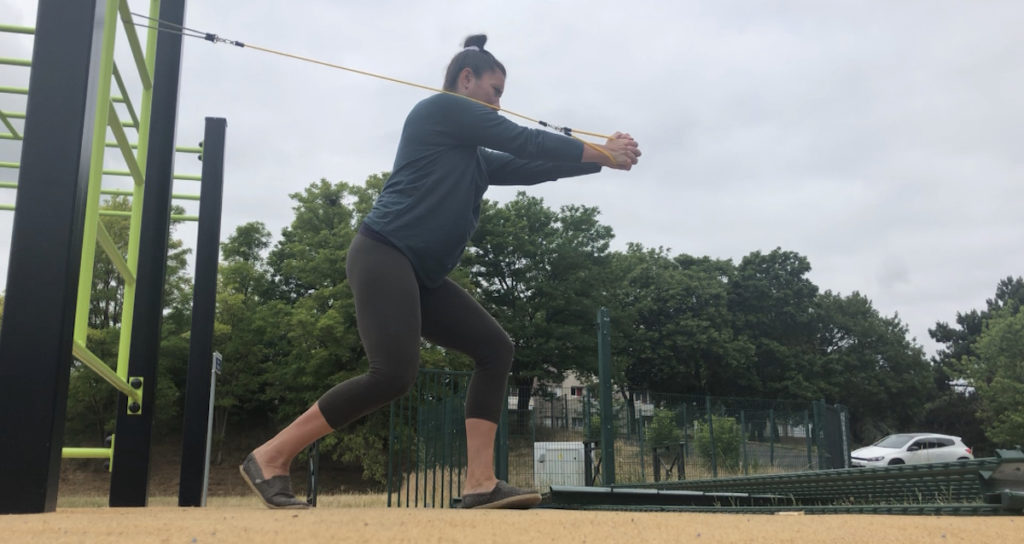Though each pregnancy is a bit like a snowflake—all completely different—in my 11 years of coaching, I have seen some similar trends show up over and over when it comes to women getting back into fitness after giving birth.
Namely:
- Weak abdominal muscles: I have seen women who used to be able to do effortless strict toes to bar suddenly struggle with even a simple sit-up. Sometimes it’s more mild, and other times it stems from diastasis recti—abdominal muscles that separate during pregnancy due to the uterus putting pressure on the two bands of muscle that run down the middle of your abdomen.
- Unstable hips: Some women feel so unstable they’re scared to even attempt a lunge for fear of toppling over.
- Weak pelvic floor: A weakened pelvic floor leads women to become quad or hip flexor dominant postpartum to compensate for the weakness. If the pelvic floor isn’t strengthened, it can lead to urinary incontinence, and in extreme cases, eventual organ prolapse.
Here’s the thing: Our body is connected, so often these problems are all related, as the function of one area affects the other. For example, if your abdominal muscles are weak, this can cause pelvic control issues, and without control of the pelvis, it’s also difficult to control the hips.
Editor’s Note: The content on BarBend is meant to be informative in nature, but it should not be taken as medical advice. When starting a new training regimen and/or diet, it is always a good idea to consult with a trusted medical professional. We are not a medical resource. The opinions and articles on this site are not intended for use as diagnosis, prevention, and/or treatment of health problems. They are not substitutes for consulting a qualified medical professional.
Two important keys to getting the various parts of your body working together in unison again:
1. Reactivate muscle through contracting and relaxing
Though it sounds super simple, it’s important to learn to activate and relax specific muscle groups.
Start by standing with a neutral trunk, or laying down on your back. Then focus on contacting and relaxing your deep layer of abdominal muscles. Once you start to feel a little more comfortable contracting and relaxing, try the same thing doing a simple movement like a squat or a box step-up. Don’t add any load. Just focus on re-establishing control of those muscles through simple contracting and relaxing.
2. Focus on your breath
Proper breathing is another key to getting your body up and running properly postpartum.
This means focusing on breathing in all four directions—into your diaphragm, into the deepest muscles of your abdomen, into your pelvic floor, and into your lower back—almost as though you’re blowing air into a balloon. Breathing this way ensures each of those areas and muscles are working together to be on the same page.
Once again, start by practicing this type of breathing when you’re lying down or standing up with good posture, and eventually implement this breathing when you’re doing simple movements, like walking, squatting, step-ups, or even a plank hold.
[Read More: The Most Effective Workout Splits, Created by Our Experts]
5 Simple Core Exercises to Rebuild Strength Postpartum
1. Pelvic Tilt
On your back, place your feet on a physio ball, bench or box. Bend your knees until they’re at a 90 degree angle. Then contract your abdomen, building as much tension in your body as you can, press your lower back into the ground and tilt your pelvis forward. Hold this position for 10 seconds, squeezing everything you can, and then relax.
- 3 sets of 5 pelvic tilts with a 10-second pause.
2. 5-Breath Plank Holds
Assume the top of a push-up position. Take a slow deep breath as described above. As you’re breathing out, focus on pushing your hands into the ground and your back to the sky. Take 10 full seconds to breathe in and breathe out.
- 5 sets of 5-breath plank holds (each hold should be 50 seconds long total)
3. Pallof Twists


Attach a band to a post. Pull the band to the centre of your chest and step away from the post, so as to build tension in the band. Press the band out so your arms are totally straight. From there, rotate your entire body 45 degrees so you’re facing the opposite wall to the post. Focus on your breathing and keeping good posture throughout.
- 3 sets of 10 Pallof twists in each direction
4. Wall Pressing Deadbug Holds
On your back, assume a deadbug position, with your legs at a 90-degree angle (or greater) from your body. Then reach behind you with your hands and place them flat on a wall. Press into the wall as you build as much tension in your abdomen and pelvic floor as you can. Pressing into the wall will help you generate even more tension throughout your body. Hold for 30 seconds.
- 3 sets of 30-second wall pressing deadbug holds
5. Seated Leg Lift Offs
Sit up with your legs stretched out straight. Keep a neutral torso and sit-up as tall as you can, ideally leaning forward a little bit so your body and legs are at a slightly acute angle. Then place your hands on either side of one leg. Raise that leg off the floor as high as you can, keeping your knee straight. Slowly lower it. Again, focus on your breathing during these leg lift offs.
- 3 sets of 10 leg lift offs per leg, with two seconds to lower your leg
[Read More: The Best Workout Apps for Women]
Editor’s note: This article is an op-ed. The views expressed herein and in the video are the author’s and don’t necessarily reflect the views of BarBend. Claims, assertions, opinions, and quotes have been sourced exclusively by the author.